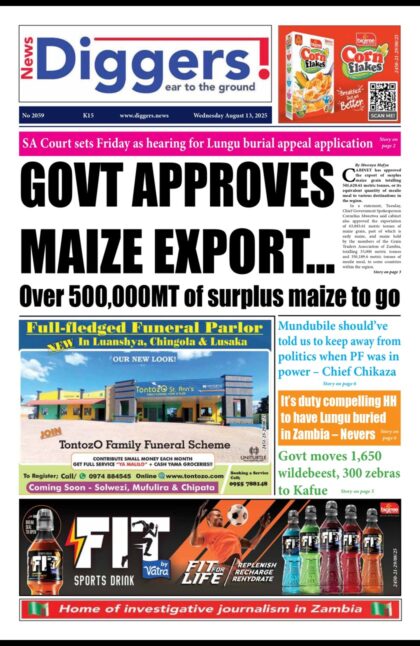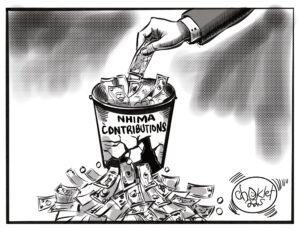In last week’s opinion piece, we explored the role and potential that gold as a mineral has in the transformation of Zambia’s economy. We discussed some of the challenges that the gold sub-sector faces including smuggling and informalization of mining operations—especially small-scale mining. We highlighted some positive steps that the government took such as the setting up of the Zambia Gold Company Limited (ZGCL) to spearhead formalization of gold mining in order to address some of the challenges. Today, we extend this discussion to propose a roadmap for enhancing Zambia’s gold value chain.
Enhancing the gold value chain in Zambia necessitates an understanding of the country’s gold production. Both Artisanal and Small-scale Gold Mining (ASGM) and Large-Scale Mining contribute to the nation’s gold output. From a steady increase in production from 1,900 kilograms in 2008 to approximately 5,000 kilograms in 2013, there has been a notable decline post-2013, with the annual production averaging around 3,900 kilograms over the past seven years. A crucial step towards strengthening the gold value chain lies in the urgent need for enhanced geological mapping and exploration efforts. This is essential to gain a precise understanding of the country’s gold reserves in terms of their extent and quality. Without this knowledge, it is challenging to develop the sector effectively or attract strategic investments necessary for amplifying production.
Building upon this foundational understanding, several strategies can propel the development of gold value chain in Zambia. Key among these are the refinement of policy and regulatory frameworks, establishing refinery and processing plants and the implementation of market strategies that have successfully elevated other nations within the global gold industry.
A pivotal element in fortifying Zambia’s gold value chain involves adopting a strategy that ensures sustainable production across diverse scales and capacities. This strategy requires first providing for tailored fiscal regimes for Artisanal and Small-scale Gold Mining (ASGM) separate from large scale mining. The current fiscal regime, guided by various pieces of legislation, makes no distinction between Large Scale Gold Mining (LSGM) and ASGM operators. As a result, when taxes are adjusted targeting large Scale Gold Mining, it often is incompatible with requirements to foster growth and investment for small scale mining.
Cooperatives can also play an important role in organizing and uplifting ASGM. The formation and empowerment of cooperatives plays a crucial role in strengthening gold value chains. While some cooperatives already exist, they lack coordination and proper financing. Getting cooperatives to be effective requires a structured framework, backed by governmental support and financing, to ensure economic and operational efficiencies that will enhance miners’ business functions and contributions to their local economies.
Additionally, the creation of markets is critical for improving value chains. The launch of the Export Diversification Strategy in Gold and Gemstone Mining in 2020 invoked this spirit. Trade hubs and market centers should be established in remote mining areas to improve the flow of gold to stabilize the gold supply chain, improve market access and promote competitiveness of Zambian gold at both local and international markets.
The formalization of artisanal and small-scale mining (ASM) activities is a cornerstone of a value chain enhancement strategy for gold as it will integrate artisanal miners into the formal economy. This process involves registering miners and providing them with legal mining rights. In part, this will require addressing the long government procedures. Offering support services such as training in sustainable mining practices is also critical. This can be done in partnership with academic institutions like the university of Zambia and the Copperbelt University.
Finally, Zambia must establish local processing and refining facilities in several parts of the country to increase local processing and refining of gold mined in the country. This will add value to the raw gold within the country before it is exported thereby increasing export earnings. This strategy will not only create jobs but also retain a larger share of the value chain within Zambia, expanding for further private sector opportunities.
In conclusion, projecting the economic benefits of a fully optimized gold value chain opens a new attainable vision for Zambia’s gold sub-sector. A vision where gold mining significantly contributes to GDP growth, employment, and foreign exchange earnings. The diversification of Zambia’s economy through the gold sub-sector can pave the way for a resilient and diversified economic landscape equipped to position itself on the global market.
About the Author.
Ibrahim Kamara serves as the Head of Research at the Centre for Trade Policy and Development. With degrees in Economics and Finance and a master’s in Public Finance and Taxation, he spearheads research to shape policy reforms in Zambia. Ibrahim’s expertise extends to financial journalism and public policy, enriching his contributions to Zambia’s economic discourse. His efforts focus on refining the country’s tax regime, enhancing domestic resource mobilization, and promoting sustainable development. Formerly, he led the Zambia Tax Platform, aiming to optimise tax policies and practices.
























